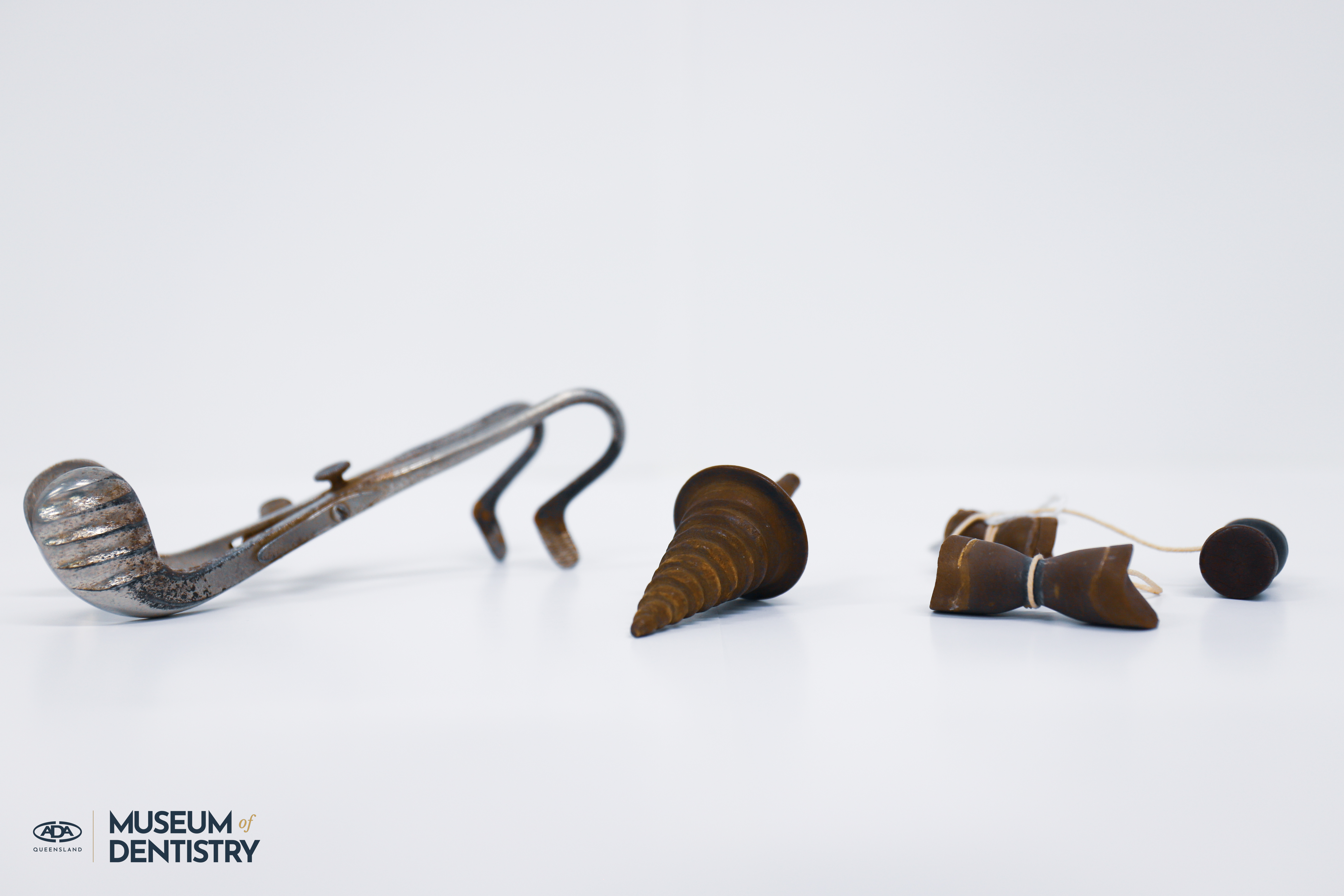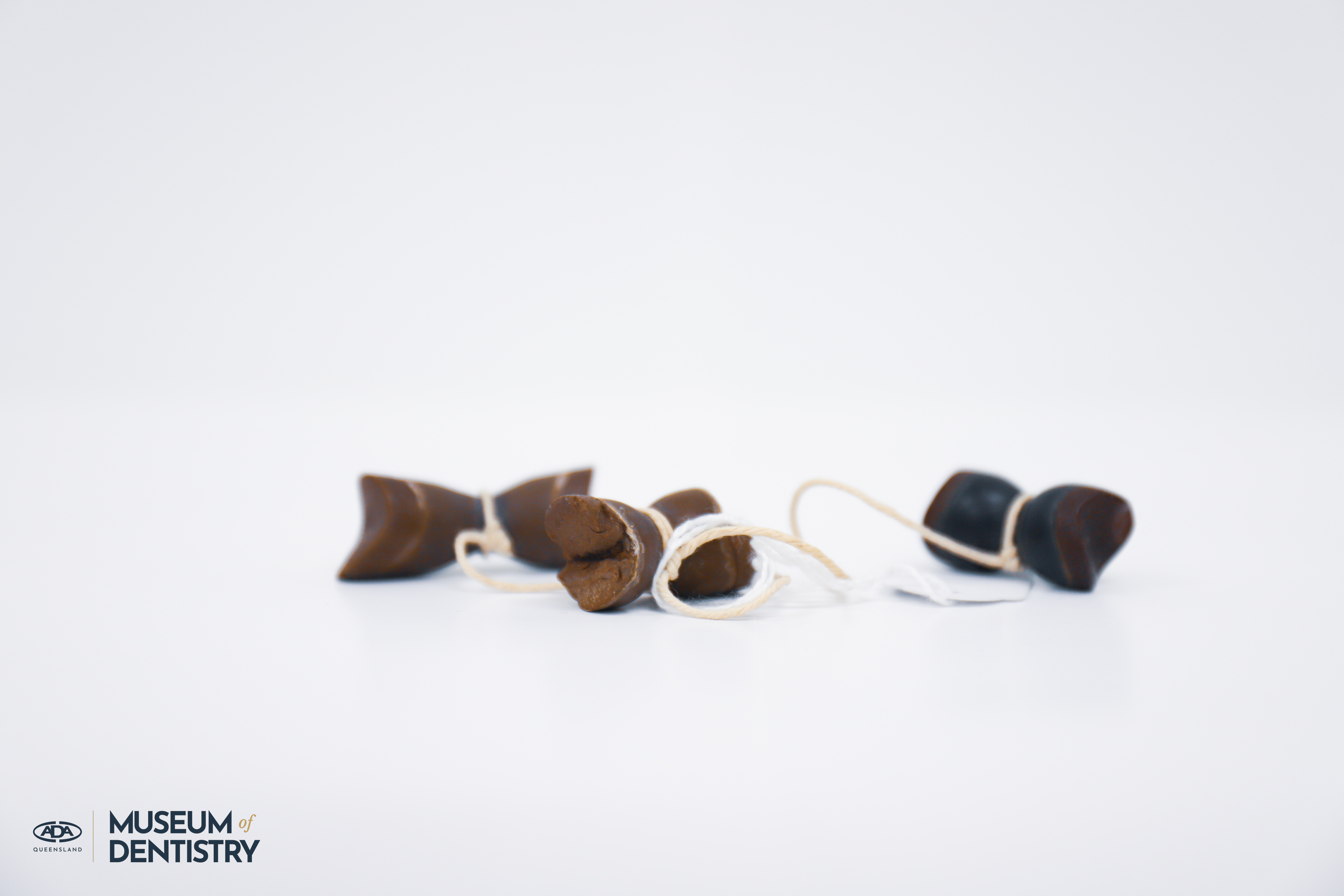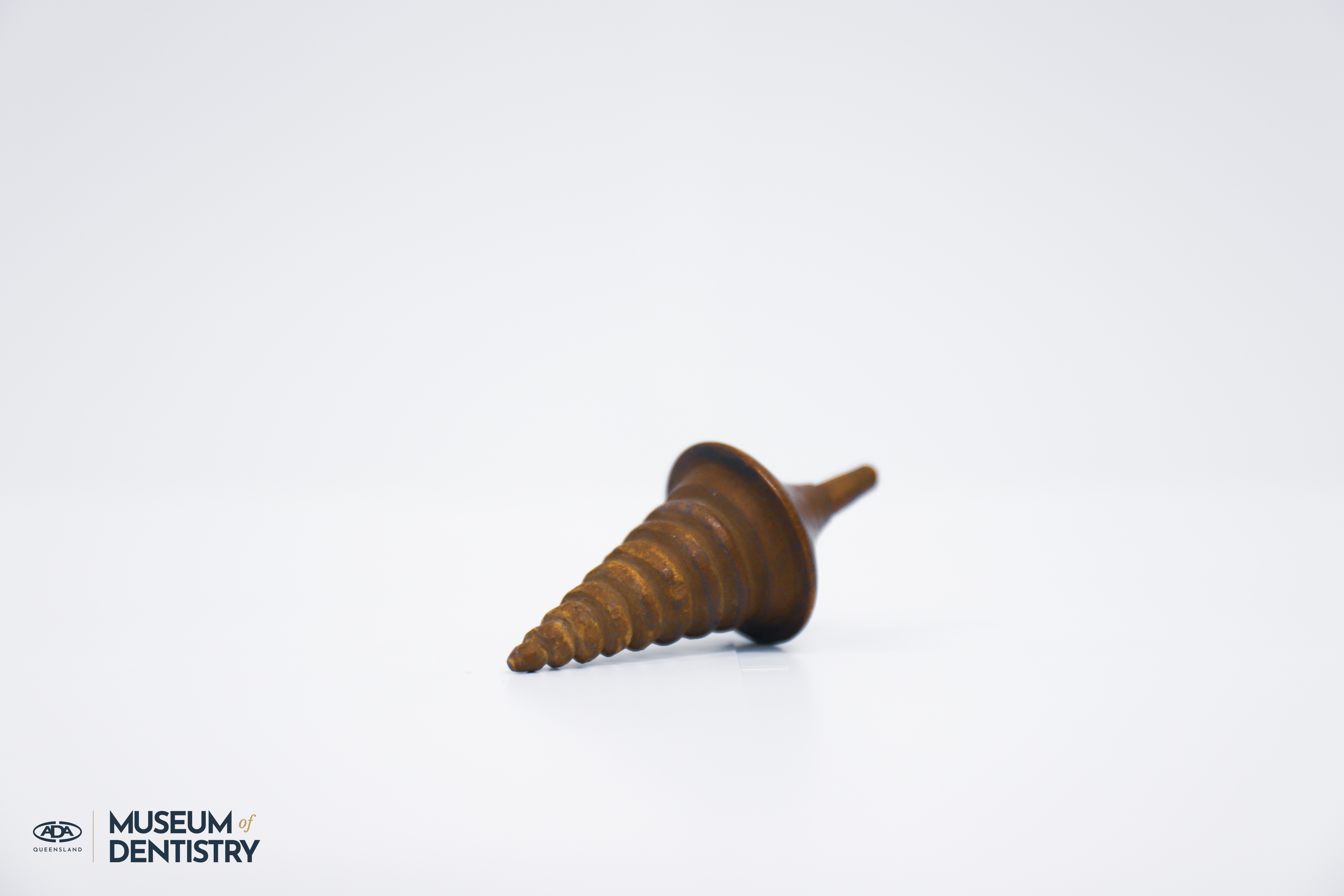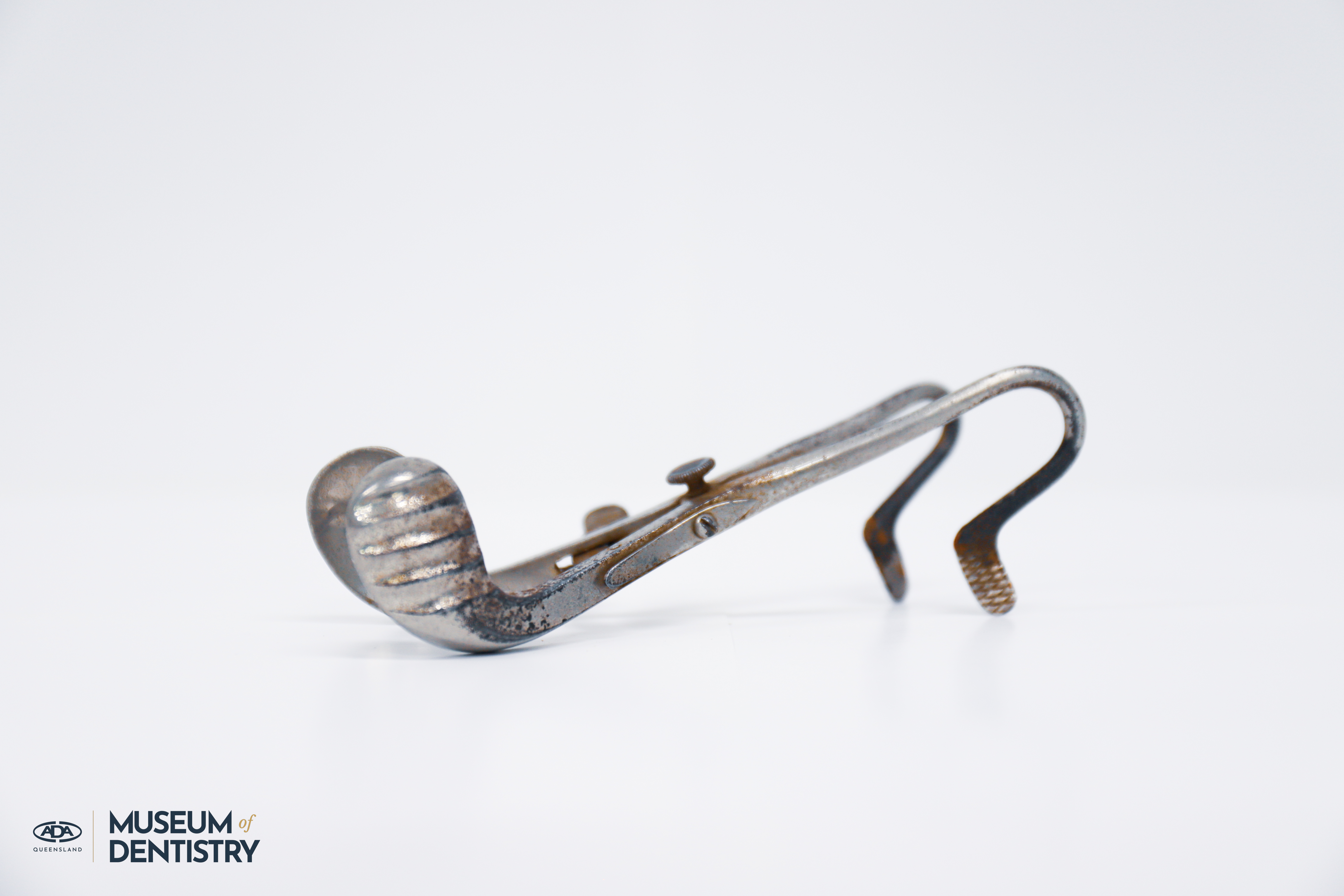ADAQ Museum of Dentistry: Mouth Gags & Specula

A variety of implements have been used in the past to keep a patient’s mouth open for dentistry, oral surgery, and anaesthesia.
Fear often prevents patients from opening their mouth, but many medical conditions require propping the mouth open for treatment or feeding, including the once widespread symptoms of the dreaded tetanus, or lockjaw. ADAQ’s historical collection includes a few old mouth gags that never fail to unsettle visitors who are non-dental professionals, and sometimes dentists too!
Wooden props and metal specula for oral use feature in medical books as early as the sixteenth century, but these instruments have also been used in the past as instruments of coercion and torture.

MOUTH PROPS – 1875-1930s
The simplest mouth props or gags were either made using vulcanite or lignum vitae, one of the hardest and most dense wood known, sometimes with soft rubber edges at the contact points with teeth.

MAUNDERS SCREW GAG – 1890s
‘For rapidly forcing open the mouth’, this screw-shaped appliance bears the name of Mr Maunders, who first described the use of a hard wood gag with helicoidal grooves in the 1850s. It consists of a conical boxwood wedge with a helical spiral groove of increasing diameter and a distal holder (which is broken off in our gag). It is inserted between a gap in the front teeth.

CROFT’S ADJUSTABLE SIDE GAG – 1920s circa
This nickel-plated steel device shows one of the improvements made to the popular Mason’s adjustable side gag, which featured two curved shanks hinged together as a plier, with a ratchet-type mechanism across both and catch pin for release. The two concave cups accommodate the back teeth, in some versions these are coated in soft rubber.
More from the ADAQ Museum of Dentistry
More News Stories